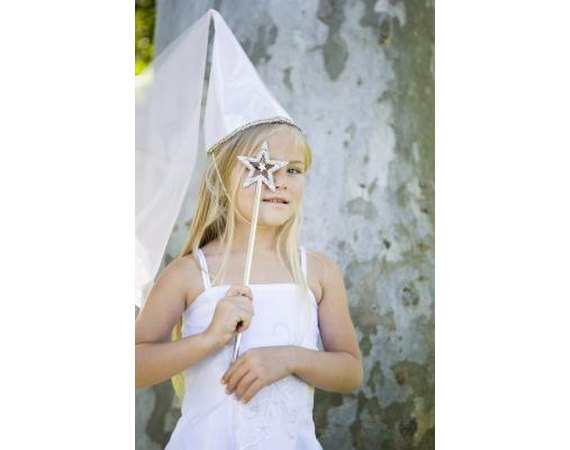
Naturally lit portraits have a very soft and personable feel. However, sometimes when taking portraits, natural lighting isn't enough. Using reflectors to supplement the lighting is an excellent and easy-to-do technique. Reflectors can also help the photographer to highlight or detract from specific parts of the subjects face. Reflectors can be purchased or handmade. There are multiple different types of reflectors available, so it's important to use the right kind.
Instructions
- 1
Set up the portrait subject where you would like the photograph to be taken.
2Assess the lighting you already have available. Don't take naturally lit portraits in the middle of the dayeither early or later than noon will have much better lighting. Where the lighting is coming from will determine where the reflector must be held.
3Choose an appropriate reflector. A bright day requires a less bright reflector in an off white or gray; a cloudier day requires a bright white or silver reflector.
4Place the reflector in the right place to reflect the light where you want it to go. For example, if the natural light is coming from above, you need to reflect the light towards the subjects face so there won't be shadows on his face. If the light is hitting the subjects face too harshly, you may need a translucent reflector to block the direct light. Multiple reflectors may be needed depending on how much natural light is available.
5Take a few test shots to see how the reflector looks. Make sure that the reflector can't be seen in the photographs or in the subjects eyes. That means that the reflector is too close for the shot.
6Take your portraits once you're pleased with the test shots.

Naturally lit portraits have a very soft and personable feel. However, sometimes when taking portraits, natural lighting isn't enough. Using reflectors to supplement the lighting is an excellent and easy-to-do technique. Reflectors can also help the photographer to highlight or detract from specific parts of the subjects face. Reflectors can be purchased or handmade. There are multiple different types of reflectors available, so it's important to use the right kind.
Instructions
- 1
Set up the portrait subject where you would like the photograph to be taken.
2Assess the lighting you already have available. Don't take naturally lit portraits in the middle of the dayeither early or later than noon will have much better lighting. Where the lighting is coming from will determine where the reflector must be held.
3Choose an appropriate reflector. A bright day requires a less bright reflector in an off white or gray; a cloudier day requires a bright white or silver reflector.
4Place the reflector in the right place to reflect the light where you want it to go. For example, if the natural light is coming from above, you need to reflect the light towards the subjects face so there won't be shadows on his face. If the light is hitting the subjects face too harshly, you may need a translucent reflector to block the direct light. Multiple reflectors may be needed depending on how much natural light is available.
5Take a few test shots to see how the reflector looks. Make sure that the reflector can't be seen in the photographs or in the subjects eyes. That means that the reflector is too close for the shot.
6Take your portraits once you're pleased with the test shots.
10 Ways to Take Stunning Portraits - Digital Photography Tips ...
digital-photography-school.com/10-ways-to-take-stunning-portrait10 Ways to Take Stunning Portraits. Discover the secrets of stunning portrait photography in this tutorial. by Darren Rowse
How to Draw, Draw Step by Step, Draw Anime, Draw People,
www.dragoart.comWelcome to Dragoart's free online drawing tutorials for kids and adults. Learn how to draw people, dragons, cars, animals, fairies, anime manga, sci-fi, fantasy art ...
How To Make A Photography Backdrop Or Reflector For Your
www.youtube.com/watch?v=U1S4wjXM6_USee how Sue Bryce uses these reflectors to create the most amazing photographs in these great classes: http://www.creativelive.com/courses/g... http://www ...
Portrait art tutorialstips on how to draw faces and portraits ...
portrait-artist.orgPortrait art tutorial. Lessons and examples of drawing portraits. Tutorials on drawing the face, eyes, nose, profile. Color tutorial. Book recommendations and links.
How To Use A Reflector In Outdoor Photography - YouTube
www.youtube.com/watch?v=oX_y9Wd14EgThis is a quick video blog by Greg Helton Photography showing how to use a reflector along side natural light to get natural looking portraits. www ...
Photoflex Lighting School Photoflex
www.photoflex.com/plsOutdoor Portrait. As seasoned photographers well know, the sun can provide beautiful light for outdoor portraits. At other times, however, they also know that it can ...
How to Become a Model - Get Tips for Becoming a Model
www.bobpardue.comHow to become a model: Learn valuable tips for becoming a model. Click here to really learn how to become a model, agency info and ....
How to choose a basic Portrait painting palette for Oils
willkempartschool.com/how-to-choose-a-basic-portrait-painting...How to paint a portrait limited color palette for Oil painting, how to match skin and flesh tones in painting
Make the Photo - How to take outdoor portraits
www.makethephoto.com/articles/how-to-take-outdoor-portraitsStrategy Two: Using a reflector. A second idea is to have your model stand directly in the sun but use a reflector to shine light back into the model's face from ...
Realistic Portrait Art: How to draw in Prismacolor colored pencils ...
www.howarddavidjohnson.com/pencil.htmrealistic Art Gallery,Portrait Lessons: how to draw photo realistic colored pencil portraits.
0 comments:
Post a Comment